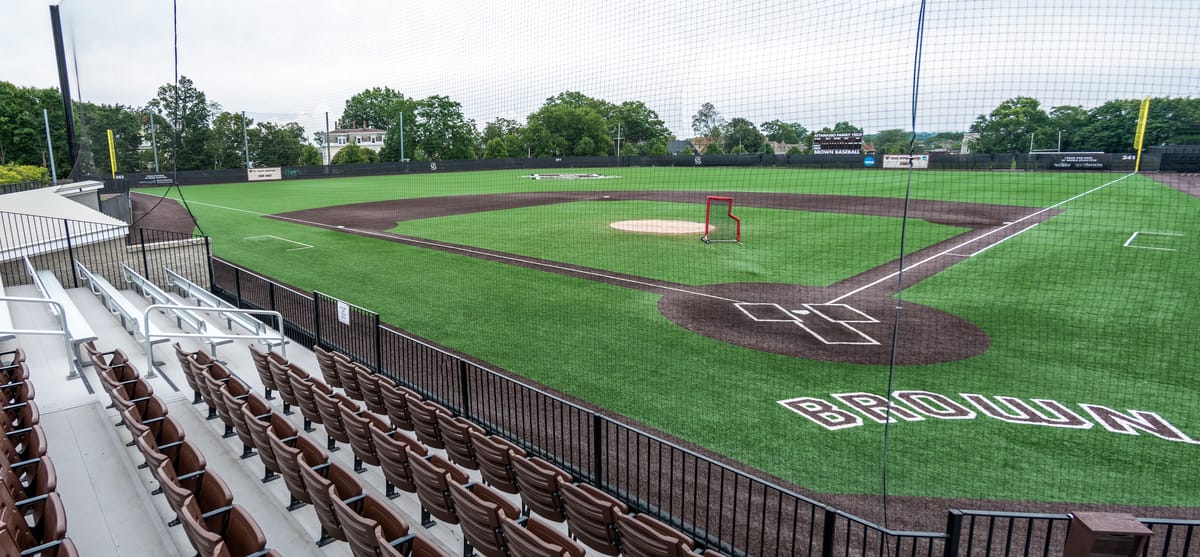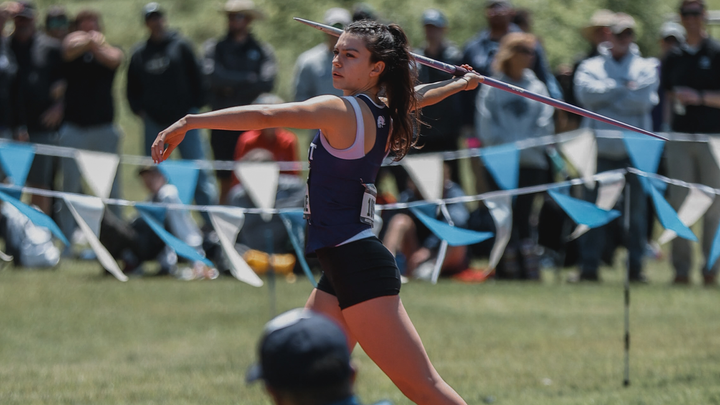Front and Center: Women, Let’s Play Ball
In her final column of the semester, Melanie Schwimmer ’23 discusses the history of women in baseball through the lens of the recent addition of Olivia Pichardo to Brown baseball’s roster.

While Brown University baseball will not take the field until February 2023, one player, Olivia Pichardo, made history this month as the first woman to play NCAA Division I baseball.
Pichardo started playing baseball at the age of five for Forest Hills Little League in Queens, New York. She made her high school’s varsity baseball team in the seventh grade, a rare feat for any athlete, regardless of gender. This summer, she played on the USA Baseball Women's National Team, competing in a friendly series with Team Canada. Then, Pichardo tried out for the Brown team this fall as a freshman, and after what head coach Grant Achilles called “the most complete walk-on tryout I have seen from a player,” she made the 31-athlete roster announced at the end of November.
Next year, Pichardo will join eight other women playing collegiate baseball across the three divisions; she is the only one competing at the Division I level. After making the team, Pichardo shared, "I'm just really glad that we're having more and more female baseball players at the collegiate level, and no matter what division, it's just really good to see this progression. It's really paving the way for other girls in the next generation to also have these goals that they want to achieve and dream big and know that they can do it."
Pichardo's quote about increasing the number of women in baseball leaves a resounding question: Why is America’s pastime all male?
For most sports, while they continue to be segregated by gender, the game is the same (or at least very similar). Men’s and women’s soccer, men’s and women’s basketball, and other sports like them are all the same across gender. However, softball is drastically different from baseball, even though people consider it the female equivalent of the sport. The difference between the sports begins to make more sense once you learn that softball was not designed as the female version of baseball we know it to be today, but rather as an indoor version of baseball for men who wanted to play inside.
The reality is that women have actually been playing baseball for almost as long as men have. While the first intercollegiate baseball game was played in 1859, between teams of men from Amherst and Williams Colleges (with Amherst taking the win), Vassar College formed an all-women’s baseball team just seven years later in 1866. In 1875, men in Springfield, Ill. organized two all-women baseball teams — the Blondes and the Brunettes — who became the first female baseball players to be paid to play. Though clearly, from their teams’ names, this league was seen more as a novelty act.
During World War II, the All-American Girls Professional Baseball League formed, and over 600 white women played professional baseball during its 12-season run. The league did not allow for Black ball players. Toni Stone became the first Black woman to play at the highest level in the Negro Leagues on the Indianapolis Clowns in 1953, and the Kansas City Monarchs in 1954. Mamie “Peanut” Johnson and Connie Morgan joined Stone on the Clowns in 1953. The Negro League eventually folded after Major Leauge Baseball allowed Black players on their rosters and took the league’s best players. The All-American Girls Professional Baseball League operated for eleven years before folding largely due to pressure and competition from Major League Baseball.
But, as women’s baseball folded, softball rose. Initially, softball saw its popularity increase as an alternative for men who were injured playing baseball. As people panicked about men spending too much time inside with job markets shifting away from field-work, people encouraged men to stick to baseball, simultaneously taking baseball opportunities away from women.
This divide — women should play softball and men should play baseball — was cemented by Title IX. The law does not dictate what sports schools should have, just that they must be funded equally. Athletic directors argued that softball was enough of an equivalent to baseball that if schools had a softball program for women and a baseball program for men, they complied with Title IX. This allowed them to save money and not have to start additional programs for women.
Women who want to play baseball are turned aside and offered softball instead. Because softball has never had the same level of public support as baseball, women are segregated from receiving the riches of the game. But, despite the oppressive forces working against them, Olivia Pichardo and female baseball players like her are proving that America’s pastime truly is one for all of us.
Front and Center would like to conclude by calling attention to the fact that Britney Griner has been wrongfully detained in Russia for 293 days. She currently faces homophobia, racism, and 16-hour work days in a penal colony. Bring her home.




Comments ()